
Biomedical Spectroscopy and Imaging
metrics 2024
Advancing the Frontiers of Biomedical Imaging
Introduction
Biomedical Spectroscopy and Imaging, published by IOS Press, is a pivotal journal in the field of biomedical engineering and imaging technologies, specifically focusing on spectroscopic methods and their biomedical applications. With an emphasis on advancing knowledge and innovation in spectroscopy and imaging, the journal serves as a vital platform for disseminating high-quality research that bridges the gap between theoretical studies and practical applications in healthcare. Despite its coverage being discontinued in Scopus after 2015, the journal continues to contribute significantly to the scientific community, fostering interdisciplinary collaboration among researchers and professionals. The journal does not have an Open Access option, which provides a unique challenge for authors and readers alike, promoting engagement with subscription-based scholarly communication. As aspiring researchers and seasoned professionals delve into its pages, they will discover a rich array of studies and insights that not only enhance their understanding but also inspire future investigations in this dynamic field.
Metrics 2024
 -
- 0.30
0.30 1.80
1.80 -
-Metrics History
Rank 2024
IF (Web Of Science)
JCI (Web Of Science)
Quartile History
Similar Journals

Journal of Optical Microsystems
Unveiling the Potential of Optical MicrosystemsJournal of Optical Microsystems, published by SPIE-SOC PHOTO-OPTICAL INSTRUMENTATION ENGINEERS, is a premier open-access journal dedicated to advancing the field of optical microsystems. With a focus on the intersections of Atomic and Molecular Physics, Electrical Engineering, and Materials Science, this journal has quickly emerged as a key resource since its inception in 2021, currently maintaining a Q2 ranking in multiple relevant categories. Although it is relatively new, its impact within the academic community is reflected in its percentile rankings, positioning it among the top-tier journals. The Journal provides a platform for researchers, professionals, and students to publish and access cutting-edge studies that explore innovative applications of optical technologies. With its commitment to disseminating high-quality research and the growing importance of optics in technology, the Journal of Optical Microsystems plays a critical role in bridging the gap between theoretical advancements and practical applications in the field. Located in the United States, it is poised to connect an international audience eager to contribute to and benefit from developments in optical and electronic materials.
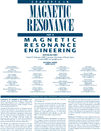
CONCEPTS IN MAGNETIC RESONANCE PART B-MAGNETIC RESONANCE ENGINEERING
Innovating the Future of Imaging and Radiology.CONCEPTS IN MAGNETIC RESONANCE PART B-MAGNETIC RESONANCE ENGINEERING is a premier journal published by WILEY-HINDAWI, dedicated to advancing the field of magnetic resonance engineering. With an ISSN of 1552-5031 and E-ISSN 1552-504X, this journal offers an Open Access platform since 2022, ensuring that research is freely accessible to scholars worldwide. Covering a broad spectrum of applications in medicine, radiology, nuclear medicine, and imaging, it serves as a key resource for professionals looking to stay updated with the latest advancements and innovations in the field. The journal enjoys notable rankings in various categories, including a rank of #137 in Medicine and #26 in Health Professions within Scopus, reflecting its importance and influence in both academic and clinical settings. As a vital conduit for cutting-edge research, CONCEPTS IN MAGNETIC RESONANCE PART B is committed to fostering the growth of knowledge while addressing the critical challenges and technological enhancements within magnetic resonance methodologies. Researchers, professionals, and students can expect to find comprehensive articles that adhere to high scientific standards, promoting discourse and collaboration across disciplines.

IEEE Journal of Electromagnetics RF and Microwaves in Medicine and Biology
Innovating the intersection of medicine and technology.IEEE Journal of Electromagnetics RF and Microwaves in Medicine and Biology is a premier journal dedicated to advancing the frontiers of research in the interdisciplinary domains of electromagnetics and biomedical applications. Published by the renowned IEEE-INST ELECTRICAL ELECTRONICS ENGINEERS INC in the United States, this journal holds a distinguished reputation, exemplified by its Q1 rankings in the fields of Instrumentation and Radiation, as well as a solid Q2 ranking in Radiology, Nuclear Medicine, and Imaging for 2023. Covering a wide spectrum of topics—from RF and microwave technologies to their applications in medical diagnostics and treatment—the journal aims to foster collaboration among researchers, practitioners, and educators. With a commitment to high-quality peer-reviewed content and a strong impact factor reflecting its extensive reach in the field, the IEEE Journal of Electromagnetics RF and Microwaves in Medicine and Biology serves as an essential resource for professionals and scholars who seek to bridge the gap between engineering and medical sciences. Researchers looking to access cutting-edge findings can benefit from the journal's engagement with contemporary issues in health technology, enhancing both academic and practical knowledge in the evolving landscape of medical electromagnetics.
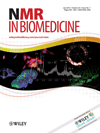
NMR IN BIOMEDICINE
Transforming Biomedical Science Through NMR InsightsNMR in Biomedicine is a prestigious journal published by Wiley that has been at the forefront of advancing research in the integration of Nuclear Magnetic Resonance (NMR) techniques within the realms of biomedicine since its establishment in 1988. With its ISSN 0952-3480 and E-ISSN 1099-1492, this journal focuses on the application of NMR across various scientific disciplines, including Molecular Medicine, Radiology, Nuclear Medicine and Imaging, and Spectroscopy. The journal is classified in the Q1 and Q2 quartiles as of 2023, showcasing its significant impact and contribution, particularly in Radiology and Spectroscopy, where it ranks in the top tier of its fields. The Scopus ranks reflect its esteemed position, with notable placements such as #70/333 in Radiology and #25/76 in Chemistry Spectroscopy. While Open Access options are not available, the journal remains committed to providing high-quality, peer-reviewed research that fosters innovation and collaboration within the scientific community. Researchers, professionals, and students are encouraged to explore the cutting-edge findings presented in this journal, as it continues to shape the future of biomedical applications of NMR.
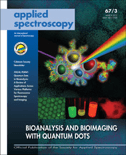
APPLIED SPECTROSCOPY
Enriching the Dialogue in Spectroscopic ResearchApplied Spectroscopy, published by SAGE Publications Inc, is a leading journal in the field of spectroscopy and instrumentation, with a legacy dating back to 1970. This esteemed journal, recognized within the Q2 category for both Instrumentation and Spectroscopy in 2023, provides critical insights and advancements that cater to a wide audience of researchers, professionals, and students. With its Scopus rankings placing it in the top 20% of publications in its respective fields, Applied Spectroscopy stands out for its rigorous peer-reviewed content that drives innovation in analytical techniques and applications. Though not an open-access publication, readers can access a wealth of research articles, reviews, and experimental findings that enrich the scientific discourse in spectroscopy. With a focus on enhancing the understanding and practical applications of spectroscopy, this journal is an essential resource for anyone engaged in this dynamic and evolving discipline.

Optics Continuum
Advancing Knowledge in Optics and PhotonicsOptics Continuum, published by Optica Publishing Group, is a pioneering open access journal dedicated to advancing the field of optics and photonics. Since its inception in 2022, this journal seeks to provide a vital platform for the dissemination of groundbreaking research and innovative developments across several interconnected domains, including electrical and electronic engineering, atomic and molecular physics, and material sciences focused on electronic, optical, and magnetic materials. With impressive rankings in Scopus—placed #384 in Electrical and Electronic Engineering and #109 in Atomic and Molecular Physics—the journal aims to engage a diverse readership comprised of researchers, professionals, and students, promoting collaboration and knowledge exchange. The journal's open access model ensures that cutting-edge research is readily available to all, nurturing an inclusive academic environment. For those interested in staying at the forefront of optics research, Optics Continuum is an essential resource that continuously enriches the global scientific community.
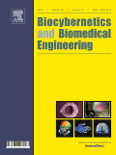
Biocybernetics and Biomedical Engineering
Unleashing the Potential of AI in HealthcareBiocybernetics and Biomedical Engineering, published by ELSEVIER in the Netherlands, is a prestigious journal that stands at the forefront of the intersecting fields of biomedical engineering and artificial intelligence. With an impressive Impact Factor that places it in the Q1 category for Biomedical Engineering, this journal not only ranks 17th out of 303 in Scopus but also boasts a remarkable percentile ranking of 94th, highlighting its influence and relevance within the scientific community. Since its inception in 2008, Biocybernetics and Biomedical Engineering has aimed to publish cutting-edge research that integrates principles of cybernetics with technological advancements in health care, thereby fostering innovations that improve patient outcomes. Dedicated to advancing knowledge in biomedical technology, the journal serves as a vital resource for researchers, professionals, and students seeking to explore the latest developments and methodologies in the field.

MAGNETIC RESONANCE IN MEDICINE
Leading the Charge in Radiological DiscoveriesMAGNETIC RESONANCE IN MEDICINE is a premier academic journal published by Wiley, dedicated to advancing the field of radiology, nuclear medicine, and imaging. With an impressive impact factor reflective of its Q1 ranking in the Radiology, Nuclear Medicine and Imaging category for 2023, it holds a distinguished position among its peers. Since its inception in 1984, this journal has served as a vital resource for researchers, clinicians, and students alike, offering cutting-edge research articles, reviews, and innovative findings that push the boundaries of magnetic resonance technology. The journal’s rigorous peer-review process ensures the highest standards of scientific integrity, making it an essential platform for those looking to make significant contributions to the field. Published in the United States, MAGNETIC RESONANCE IN MEDICINE continues to foster global discourse and collaboration, offering access options that include traditional subscriptions, ensuring that its vital content remains accessible to the academic community and beyond.
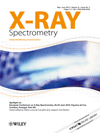
X-RAY SPECTROMETRY
Unveiling the power of X-ray spectrometry for scientific discovery.X-RAY SPECTROMETRY is a distinguished journal published by Wiley that focuses on the advancements and applications of X-ray spectroscopic techniques in various scientific fields. Established in 1972, the journal has become a prominent platform for researchers and professionals, promoting the exchange of innovative ideas and thorough investigations in spectroscopy, particularly within the realm of chemistry. With an ISSN of 0049-8246 and an E-ISSN of 1097-4539, it maintains strong visibility in academic circles. The journal currently holds a Q3 ranking in Spectroscopy, positioned at rank #52 out of 76 in the Chemistry category according to Scopus metrics, reflecting its solid standing in the field despite its percentile of 32. While X-RAY SPECTROMETRY is not an Open Access journal, it offers valuable insights and contributions from various researchers, ensuring a rich resource for those invested in the study of spectrometric applications and innovations. Researchers, students, and professionals alike will find it an essential addition to their academic library, aiding in the advancement of knowledge in spectroscopy.

JOURNAL OF NANOPARTICLE RESEARCH
Harnessing Nanotechnology for Interdisciplinary DiscoveriesJOURNAL OF NANOPARTICLE RESEARCH, published by SPRINGER, is a pivotal platform in the interdisciplinary field of nanotechnology, encompassing atomic and molecular physics, bioengineering, chemistry, condensed matter physics, and materials science. Operating since 1999 and converging through 2024, this journal presents cutting-edge research and innovations in nanoparticle science, aiming to bridge theoretical studies with practical applications. With a diverse scope that attracts articles ranked in various Q2 and Q3 category quartiles across its fields, including Bioengineering and Nanoscience and Nanotechnology, it ranks favorably within Scopus metrics, ensuring high visibility and impact among researchers. While the journal operates under traditional access models, it remains a critical resource for professionals and students alike, empowering them to advance their knowledge and drive future discoveries in this rapidly evolving area of study.